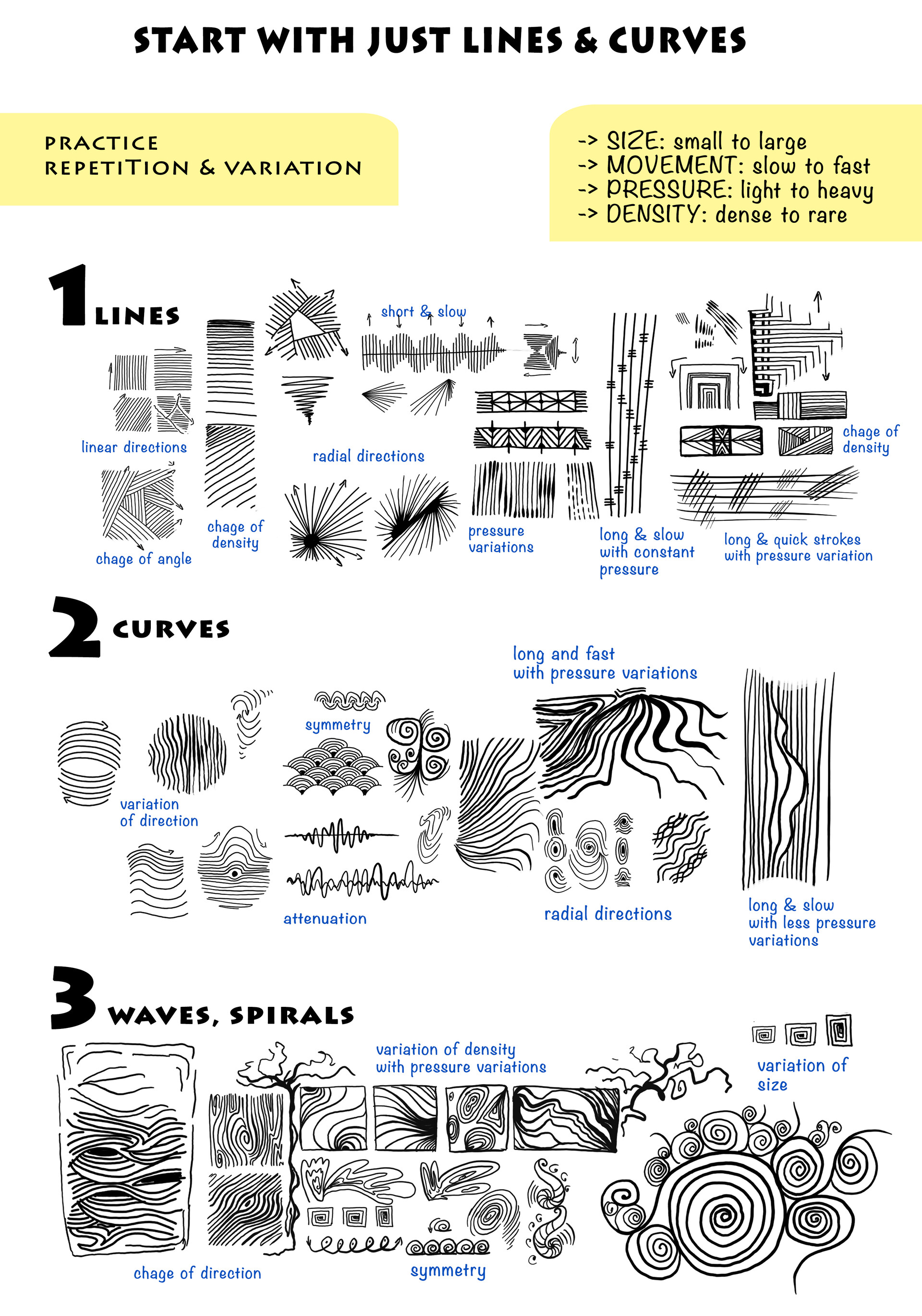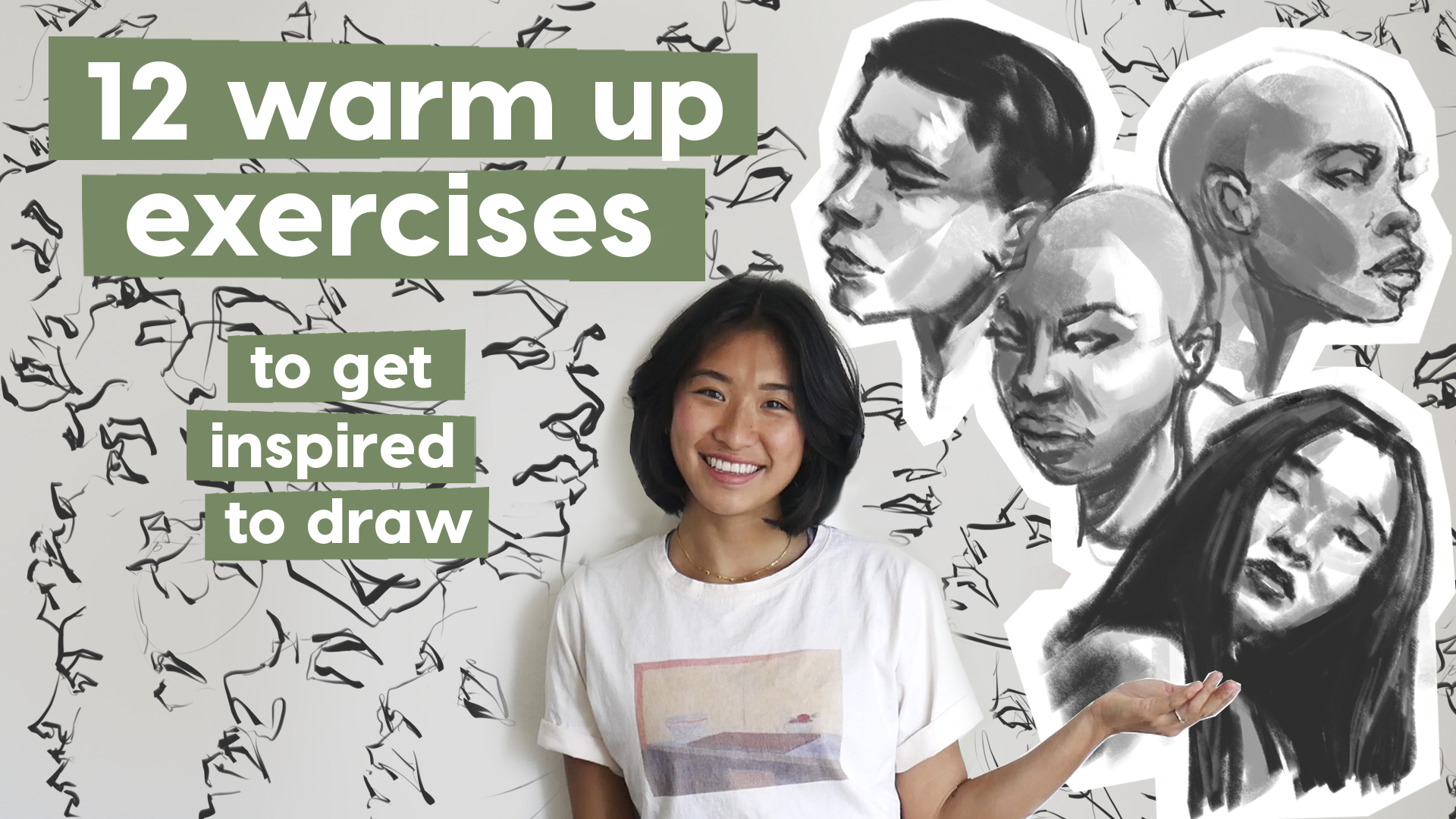Warm Up Exercises Drawing
If you're an artist, you know the importance of warm up exercises before starting any drawing. You may think that you can skip this step, but it could actually be holding you back from reaching your full potential. In this post, we'll explore the benefits of warm up exercises drawing and how they can improve your art skills.
Pain Points of Skipping Warm Up Exercises Drawing
Do you ever feel like your lines are shaky or your art is lacking energy? This could be a result of not properly warming up your hand, arm, and mind before starting to draw. Without warm up exercises drawing, your muscles may tense up or be unprepared for the movements required for your art style. Additionally, if you jump straight into your drawing, you may struggle to come up with creative ideas or compositions.
Target of Warm Up Exercises Drawing
The purpose of warm up exercises drawing is to limber up your hand, arm, and mind before diving into your main drawing. It's also an opportunity to experiment with different techniques, shapes, and compositions to get your creative juices flowing. By spending just a few minutes warming up, you'll be able to produce cleaner, more confident lines, and come up with more interesting ideas.
Summary of Benefits of Warm Up Exercises Drawing
To summarize, warm up exercises drawing has several benefits, including:
- Reduced risk of injury or strain on your hand and arm muscles
- Improved precision and control over your drawing tool
- Increased creativity and idea generation
- Improved muscle memory for your art style
10 Simple Warm Up Exercises for Drawing
Here are some simple exercises you can try before starting your drawing:

1. Scribble: Make quick scribbles to loosen up your hand and warm up your muscles.
2. Shapes: Draw a series of circles, squares, and triangles to practice precision and control.
3. Lines: Draw different types of lines, such as straight, curved, and zigzag, to practice your control and to warm up your hand.
4. Hatching: Draw parallel lines in different directions to practice shading and create texture.
5. Crosshatching: Draw intersecting lines to create darker shades and more textured looks.
6. Contour Lines: Draw outlines of objects to practice drawing what you see and to warm up your hand.
7. Perspective: Draw different perspectives of a simple object, such as a cube or sphere, to warm up your mind and practice different angles.
8. Blind Contour: Draw the outline of an object without looking at your paper to improve hand-eye coordination.
9. Gesture Drawings: Draw quick sketches of people or animals to capture movement and improve your observation skills.
10. Collaboration: Draw with another artist to create interesting, collaborative art and to inspire each other.
The Importance of Consistency
The key to getting the most out of warm up exercises drawing is to do them consistently. Try to incorporate them into your daily art practice so that they become a regular habit. You'll soon notice improvements in your confidence, precision, and creativity.
Warming Up for Different Art Styles
While the exercises above are generally useful for artists of all styles, specific warm up exercises drawing may be more beneficial for certain art forms. For example, a calligrapher may benefit from exercises that focus on precision and control of the pen, while a comic artist may want to practice gesture drawings to improve their storytelling skills.
Experimentation is Key
The wonderful thing about warm up exercises drawing is that there are no hard and fast rules. You can experiment with different exercises and techniques to find what works best for you.
Question and Answer
- Q: How long should I spend on warm up exercises drawing before starting my main drawing?
- Q: Can I warm up with my main drawing?
- Q: Can I warm up without paper and a pen?
- Q: Can warm up exercises drawing help with artist's block?
A: This is up to you and may vary depending on the complexity of your main drawing. However, spending at least 5-10 minutes on warm up exercises drawing is a good general rule of thumb.
A: While you may feel like starting your main drawing right away, it's best to take some time to warm up first. This will help to prevent hand fatigue and ensure that your lines are smooth and precise.
A: Absolutely! Warm up exercises drawing can be done on any surface with any drawing tool. You can use a touchscreen device, a notepad, or even a whiteboard.
A: Yes, warm up exercises drawing can be a great way to get your creative juices flowing and overcome artist's block.
Conclusion
Warm up exercises drawing may seem like a time-consuming step, but it can greatly improve your art skills and prevent injury to your hand and arm muscles. By incorporating warm up exercises into your daily art practice, you'll soon see improvements in your precision, control, and creativity.
Gallery
Art Of Cristina - Warm-up Sketches For The Eye-hand Coordination

Photo Credit by: bing.com / sketching coordination
Man Doing Warm Up Exercise | Vectors - VideoPlasty

Photo Credit by: bing.com / warm exercise clipart man doing vectors vector videoplasty clipground
10 Simple Warm-Up Exercises That Will Transform Your Drawing Practice

Photo Credit by: bing.com / exercises transform sketches beginners
8 Drawing Warm Up Exercises To Help You Improve – The Beginning Artist

Photo Credit by: bing.com /
12 Drawing Warm-Up Exercises For Your IPad | Astropad

Photo Credit by: bing.com / astropad


0 Response to "Warm Up Exercises Drawing"
Post a Comment